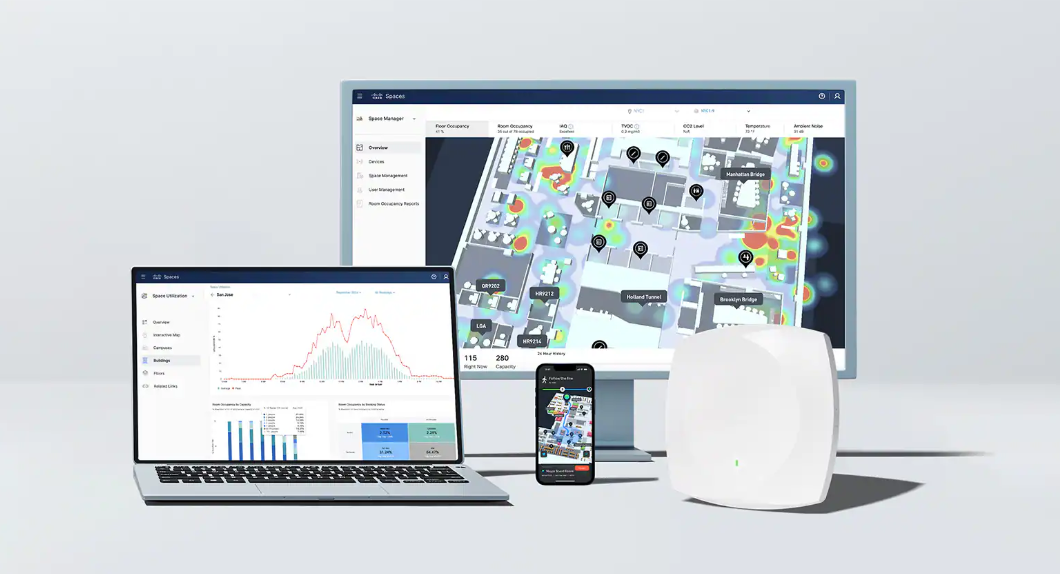
































Cisco Wireless Access Points (APs) voir aussi: are versatile devices that support various modes to cater to different network requirements. Whether serving clients or managing network operations, the modes enhance network performance, flexibility, and troubleshooting capabilities. This comprehensive guide explains the supported Cisco AP modes and their specific use cases.
Introduction to Cisco AP Mode Modes
Client-Serving Cisco AP Modes
Local Mode
FlexConnect Mode
Bridge Mode (Mesh Mode)
Flex+Bridge Mode
Network Management Cisco AP Modes
Monitor Mode
Rogue Detector Mode
SE-Connect Mode
Sniffer Mode
Other AP Modes
Client Mode
REAP/H-REAP Mode
Comparison of Cisco AP Modes
Benefits of Configurable AP Modes
Common Use Cases for Cisco AP Modes
How to Configure Cisco AP Modes
Troubleshooting Common AP Mode Issues
Best Practices for Selecting AP Modes
Limitations of Certain AP Modes
Upgrading and Compatibility Considerations
Security Implications of Different AP Modes
Future Trends in Wireless AP Modes
FAQs on Cisco Wireless AP Modes
Cisco wireless APs can operate in multiple modes, enabling them to serve clients, manage the network, or perform specialized tasks. These modes are configured from the Wireless LAN Controller (WLC) and allow APs to adapt to specific needs such as local switching, bridging, spectrum analysis, and rogue detection.
Local mode is the default setting for Cisco lightweight APs. In this mode, APs provide basic service set (BSS) connectivity for wireless clients. Additionally, the AP scans unused channels to detect noise, interference, and rogue devices, and it correlates data with Intrusion Detection Systems (IDS).
Key Features:
Supports wireless client connectivity.
Scans for interference and rogue devices.
Compatible with various wireless LANs.
FlexConnect mode, formerly known as H-REAP, is designed for remote sites with unreliable connections to the WLC. In this mode, the AP can switch traffic locally to an SSID and VLAN, even without a direct connection to the WLC.
Use Cases:
Remote offices with intermittent WLC connectivity.
Local egress of traffic for efficiency.
Bridge mode transforms an AP into a point-to-point or point-to-multipoint bridge. This configuration is ideal for extending networks across locations without additional wired connections.
Types:
Point-to-Point Bridge: Connects two separate LANs.
Point-to-Multipoint Bridge: Links multiple locations.
Flex+Bridge mode combines the features of FlexConnect and Bridge modes. This hybrid approach enables robust local switching with mesh network capabilities.
Monitor mode APs act as sensors, scanning WiFi channels without broadcasting an SSID. They identify rogue APs, track interference sources, and support location-based services.
Rogue Detector APs are dedicated to identifying rogue devices by correlating MAC addresses on wired and wireless networks. This mode aids in network security by highlighting unauthorized devices.
SE-Connect mode dedicates an AP to spectrum analysis using tools like Cisco Spectrum Expert. This mode identifies interference sources and provides RF insights for optimization.
Sniffer mode APs capture 802.11 traffic and forward it to analysis tools like Wireshark. This mode is critical for troubleshooting complex network issues.
Client Mode allows an AP to connect to another AP as a wireless client, often used to extend network coverage.
REAP, also known as Hybrid REAP, supports remote office networks by enabling local switching while maintaining connectivity to a central WLC.
| Mode | Primary Function | Use Case |
|---|---|---|
| Local Mode | Client connectivity and channel scanning | Standard deployments |
| FlexConnect | Local traffic switching at remote sites | Branch offices |
| Bridge Mode | Network bridging across locations | Campus or outdoor mesh networks |
| Monitor Mode | Passive monitoring without transmissions | Rogue detection, location services |
| Rogue Detector | Identifying rogue devices | Sécurité des réseaux |
| SE-Connect | Spectrum analysis | RF troubleshooting |
| Sniffer | Traffic capture for analysis | Debugging wireless issues |
Enhanced network flexibility.
Improved troubleshooting and monitoring capabilities.
Efficient resource utilization.
Tailored solutions for remote or specialized networks.
Local Mode: Campus WiFi deployments.
FlexConnect: Remote office networks.
Bridge Mode: Extending network reach.
Sniffer Mode: Wireless traffic analysis.
Configuring AP modes requires access to the WLC. Administrators can select the mode based on the AP's role within the network.
Mode Misconfiguration: Verify settings on the WLC.
Compatibility Problems: Ensure firmware updates.
Interference: Use SE-Connect to analyze RF conditions.
Align the AP mode with the network’s requirements.
Regularly update firmware for new features.
Monitor network performance to optimize mode selection.
Not all Cisco APs support every mode, and some modes may have limited functionality depending on hardware or firmware versions.
Before deploying specific AP modes, ensure compatibility with your WLC and network design.
AP modes like Rogue Detector and Monitor Mode enhance network security by identifying potential threats.
The evolution of wireless networks will likely introduce smarter, AI-driven AP modes to enhance automation and efficiency.
1. What is the default mode for Cisco lightweight APs?
The default mode is Local Mode.
2. What is FlexConnect mode used for?
FlexConnect enables local switching in remote sites with intermittent WLC connectivity.
3. Can an AP in Monitor Mode serve clients?
No, Monitor Mode is dedicated to scanning and monitoring.
4. How does Rogue Detector Mode improve security?
It identifies rogue devices by correlating MAC addresses on wired and wireless networks.
5. What tools support SE-Connect Mode?
Tools like Cisco Spectrum Expert and MetaGeek Chanalyzer.
6. Is Sniffer Mode suitable for real-time client support?
No, Sniffer Mode is solely for traffic analysis.
Cisco AP sans fil et contrôleurs
For Cisco product list and quote, please visit: https://www.hi-network.com/categories/cisco or contact us at www.hi-network.com (Email: [email protected])
 Tags chauds:
hot products
Tags chauds:
hot products